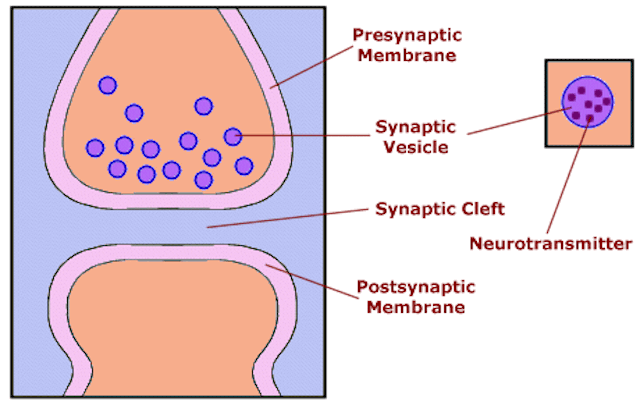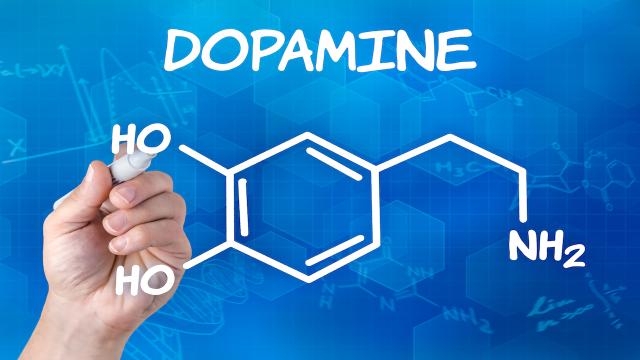I spent an hour on this opening paragraph. The hour wasn’t time well spent, mind you. Sure, I was working — writing, deleting, fiddling with words here and there — but my paragraph-per-hour pace was more the byproduct of a stubborn lack of motivation than of indecisiveness.
This post originally appeared on the iDoneThis blog.
I spent five minutes in email, 10 minutes on Twitter, and fifteen minutes doing who-knows-what on Tumblr. Just kidding, I know exactly what I was doing: looking at dog pictures. Sound familiar? Motivation is a tricky thing to corral. Tricky, but not impossible.
The Origins of Motivation: It’s in Your Head
To trace the source of motivation, let’s begin in the brain where neurotransmitters spark chemical messages to keep us alert and on task. One specific neurotransmitter that plays a role in motivation is dopamine.
Dopamine’s chemical signal gets passed from one neuron to the next, interacting with various receptors inside the synapse between the two neurons. This simple arrangement becomes much more complicated when you multiply the effect through the entire brain. Consider: there are different types of receptors, neurons, and pathways that neurotransmitters can take. Things get complicated fast.

For motivation specifically, it matters which pathway dopamine takes. The mesolimbic pathway, which originates in the middle of the brain and branches to various places like the cerebral cortex, is the most important reward pathway in the brain.
One of the mesolimbic’s stops is the nucleus accumbens. Increased dopamine in the nucleus accumbens signals feedback for predicting rewards. Your brain recognises that something important — good or bad — is about to happen, thus triggering motivation to do something.
But Wait, I Thought Dopamine Was All About Pleasure
Common knowledge is with you on this one. The dopamine-pleasure connection has been curated by scores of different studies and media reports. The pleasure reputation is well-earned because it’s true. Dopamine is the brain’s pleasure chemical.
But stopping there would be missing the complete story. Pleasure is just the tip of the dopamine iceberg. Dopamine’s impact on the body is felt in many different areas, including motivation, memory, behaviour and cognition, attention, sleep, mood, learning, and oh yeah, pleasurable reward. You hear about dopamine and pleasure because of its sticky associations with sex, drugs, and rock ‘n roll. The media refers to dopamine in scare stories about addiction (some for good reason, some not). Pleasure and all its dangerous slippery slopes is a sexier topic than attention, cognition, and motivation.
Studies of dopamine began with pleasure until researchers began noticing peculiar phenomena. They saw spikes in dopamine during moments of high stress. Dopamine rose in the case of soldiers with PTSD who heard gunfire. Stress and gunfire are not pleasurable phenomena, yet there dopamine was. What gives? It was clear that dopamine went beyond mere pleasure, and it turns out dopamine’s true effect may be motivation. Dopamine performs its task before we obtain rewards, meaning that its real job is to encourage us to act and motivate us to achieve or avoid something bad.
Studies confirm the motivation-dopamine link in a number of interesting ways. Behavioural neuroscientist John Salamone confirmed the link in an animal study on rats who were given the choice of one pile of food or another pile of food twice the size but behind a small fence. The rats with lowered levels of dopamine almost always took the easy way out, choosing the small pile instead of jumping the fence for greater reward.
In another study, a team of Vanderbilt scientists mapped the brains of “go-getters” and “slackers” and found that those willing to work hard for rewards had higher dopamine levels in the striatum and prefrontal cortex — two areas known to impact motivation and reward. Among slackers, dopamine was present in the anterior insula, an area of the brain that is involved in emotion and risk perception.
As Salamone explains: “Low levels of dopamine make people and other animals less likely to work for things, so it has more to do with motivation and cost/benefit analyses than pleasure itself.”
Can Motivation Be Hacked?
All this information’s well and good, but what happens when I’m sitting at my computer for an hour, writing an impossible opening paragraph and fighting the unbearable urge to do anything but? Am I a slacker who’s genetically disposed to low dopamine and lack of motivation?
Not necessarily. The brain can be trained to feed off of bursts of dopamine sparked by rewarding experiences. You create the dopamine environment, and the brain does the rest. One way to achieve this is by setting incremental goals, according to neurologist Judy Willis. In essence, what you are doing is rewiring the brain to attach a dopamine response to the task you want as a reward. Allow yourself to experience frequent positive feedback as you progress through a series of goals. Dopamine will flow as a result of your brain’s positive reinforcement every time you complete a step and meet a challenge.
Another way to look at the dopamine-motivation angle is to revisit the study mentioned above about go-getters and slackers. You’ll notice that dopamine was present in both types of participants, and you’ll remember that dopamine engages a vast set of reactions in the body. Dopamine is involved in both ends of the motivation spectrum, both in lighting a fire to persevere and in waving the white flag. Through this lens, motivation becomes less about increasing dopamine, and more about digging deep and being diligent. It should be a marriage of both.
Dopamine has a biological connection to our motivation to achieve. If there’s anything we can do to increase the flow of dopamine like reinforcing positive feedback through incremental progress, embrace it. Along with this, we must include effort. Sometimes, the cure for low motivation may simply be old-school determination and perseverance, sticking with doing things even when we don’t want to.
Where to Go from Here
It took me an hour to write my opening paragraph, and it took me five minutes to write this one. The difference is more dopamine, released to my brain as I met incremental goals along the way and received positive feedback from a blank document filling with words. Understanding where motivation comes from makes it easier to recognise what you need to do when it’s missing.
The next time you lack for motivation, try this: Break your indomitable task into smaller goals, and trust that dopamine will build up as you achieve your way through to the end. Should trouble or distraction interfere, push through with focused determination and deliberation.
The Science of Motivation: Your Brain on Dopamine [iDoneThis]
Freelance writer by day, sports fan by night — and sometimes vice versa. Kevan Lee writes about email and nutrition (not at the same time) and a whole lot more. Live simply, give generously, watch football, beat cancer. Come find him on Google+.

Comments
4 responses to “How To Harness Your Brain’s Dopamine Supply And Increase Motivation”
An hour for that paragraph? I mean, its a fine paragraph, but not even probably “good” let alone “great” writing heh..
perhaps you were being metaphorical.
a. that was kinda mean
b. he broke down what he spent that hour on – email, twitter and tumblr 😛
fyi, dopamine is released during orgasm, so pretty easy to hack it…
TL;DR
No cliff notes to be found. I still don’t know how to harness my dopamine levels.